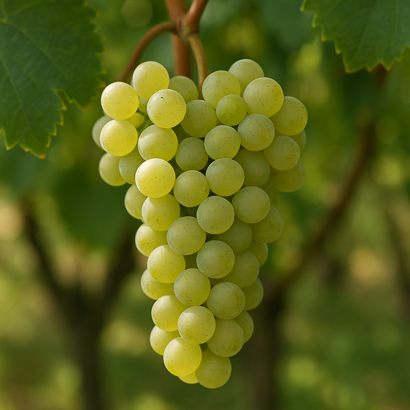Lively, aromatic, and irresistibly sweet, Moscato is a wine that celebrates life’s lighter moments. Known for its vibrant fruit, gentle bubbles, and floral perfume, Moscato offers pure pleasure in a glass. Whether sparkling or still, it’s the perfect companion to warm afternoons, dessert pairings, or simple indulgence. With its natural sweetness and refreshing character, Moscato has earned its reputation as one of the most joyful and approachable wines in the world.
A Brief History
Moscato — derived from the ancient Muscat family of grapes — is one of the oldest known wine varieties, with origins tracing back over 3,000 years to the Mediterranean basin. The name comes from the Latin muscus, meaning “musk,” a reference to its distinctive floral aroma. The Muscat grape family includes many variations, but Muscat Blanc à Petits Grains is considered the finest and most widely used for Moscato wines.
The variety flourished in Piedmont, Italy, where the lightly sparkling Moscato d’Asti DOCG became world famous. Its gentle effervescence, low alcohol content, and delicate sweetness captured the hearts of both casual drinkers and connoisseurs alike.
Beyond Italy, Moscato’s versatility helped it spread throughout Europe and into the New World. From southern France’s Muscat de Beaumes-de-Venise to Spain’s Moscatel and California’s vibrant sweet styles, Moscato has taken on many forms — each capturing a different expression of the grape’s sunny, floral charm.
Where It’s Grown
Moscato is cultivated across the globe, thriving in warm, sunny climates that allow its natural aromatics to develop fully:
- Italy: Especially in Piedmont, where Moscato d’Asti and Asti Spumante offer the quintessential expressions — lightly fizzy, fragrant, and sweet.
- France: Muscat de Beaumes-de-Venise produces fortified dessert wines with lush texture and rich fruit.
- Spain: Known as Moscatel, often blended or made into sweet, fortified styles.
- Australia & California: Popular for fresh, fruit-forward wines with tropical and citrus character, often enjoyed chilled.
Each region brings a unique expression — from refined European elegance to New World exuberance.
Tasting Notes
Moscato is typically light-bodied with low alcohol and vibrant sweetness. Its defining characteristic is its intense aroma — an alluring bouquet of orange blossom, peach, honeysuckle, and apricot, sometimes with hints of pear, citrus, or elderflower.
On the palate, Moscato is fresh and lively, offering flavors of ripe peach, mandarin orange, melon, and honey, often balanced by a gentle sparkle and crisp acidity. Some versions are completely still, while others — like Moscato d’Asti — have a soft, natural fizz known as frizzante.
Serve well-chilled (around 45°F) to emphasize its refreshing sweetness. Moscato pairs beautifully with fruit tarts, cheesecake, Asian cuisine, and spicy dishes, and it shines as an aperitif or dessert wine.
The Essence of Moscato
Moscato is a celebration of joy — approachable, fragrant, and full of sunshine. It’s not a wine that demands contemplation; it invites delight. Each sip is an expression of freshness and simplicity, capturing the feeling of summer in every glass.
From Italy’s rolling vineyards to tables around the world, Moscato continues to enchant with its floral aroma, gentle sweetness, and playful sparkle. It’s the wine that reminds us why we fell in love with wine in the first place — pure pleasure, bottled.







